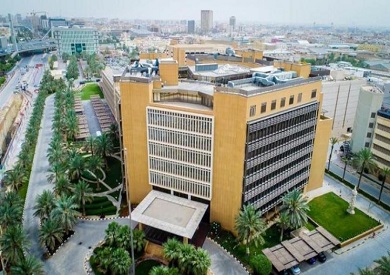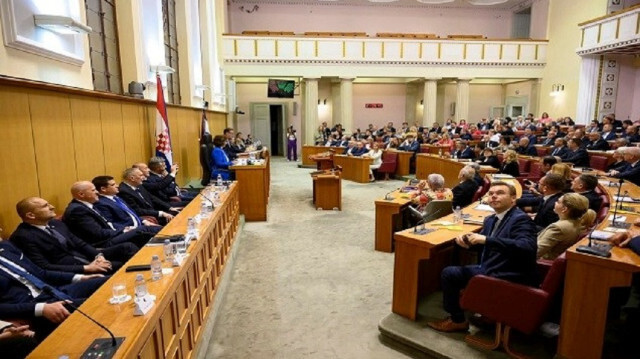Saudi Budget Q1 2024: Analysis & Insights
Saudi Arabia's financial performance in the first quarter of 2024 reflects a robust economic trajectory, despite facing a budget deficit. The kingdom's strategic expenditures and diversified revenue generation pose a multifaceted fiscal landscape.
Published May 06, 2024 - 00:05am

Image recovered from shorouknews.com
The Ministry of Finance in Saudi Arabia announced a considerable budget performance for the first quarter of 2024. Despite recording a deficit of approximately 12.4 billion riyals, the Kingdom's revenues stood at 293.4 billion riyals, signaling a sturdy economic performance buoyed by both oil and non-oil sectors.
Oil revenues amounted to 182 billion riyals, a slight increase of 2% from the previous year. Non-oil revenues, a critical component of Saudi Arabia's economic diversification efforts under Vision 2030, have also seen an increase. They recorded a 9% jump compared to Q1 of 2023, underlining the success of fiscal measures aimed at reducing dependency on oil.
Expenditures rose by 8% to reach 305.8 billion riyals, partly due to the government's commitment to its expansive spending strategy to finance strategic initiatives and projects, which include bolstering social support programs and public services, as well as capital outlays aiming at structural economic changes.
Substantial investments were made in the health and education sectors, confirming the government's priorities in these pivotal areas. The increase in spending has also led to heightened borrowing, with public debt mounting to 1115.8 billion riyals. The government balanced this with a mix of domestic and international debt instruments.
Taxes on goods and services, including the value-added tax and excise tax, have contributed significantly to the non-oil revenue stream, showing a discernible increase and reflecting an active economic and consumer landscape.
The economic prognosis for Saudi Arabia appears promising considering the substantial budget performance in the first quarter of 2024. While the presence of a deficit is not negligible, the overall revenue figures suggest robust economic vitality. This is further underlined by the measured increase in oil revenues, which, despite the modest rise, reassures the country's central income stream remains strong even as global oil markets continue to fluctuate.
Non-oil revenues, however, are particularly noteworthy. Representing a key focus of the Saudi Vision 2030 plan, the 9% leap in revenues from these sources is indicative of the Kingdom's relentless push toward a more diverse economy. This shift is aimed at mitigating the risks derived from fluctuating oil prices on the world market and at securing the nation's financial future. Efforts to diversify have encompassed a range of economic reforms, from the introduction of new industries to the enhancement of private sector engagement and investment in technology and infrastructure.
A detailed analysis of the Kingdom's expenditures reveals that the government's ambitious initiatives to transform the economic landscape are not without cost. The 8% increase in spending can be attributed to various development programs that span a wide array of sectors. Notably, the government has not shied away from incurring additional debt to fuel these expansive projects. Such an approach reflects a forward-thinking investment philosophy, where the current increase in liabilities is seen as foundational for future stability and growth.
Public services and social support programs, integral to the well-being of the Saudi population, have seen tangible enhancements due to the increased expenditure. Health and education, two sectors that form the cornerstone of any progressive society, received considerable allocations, underscoring the government's commitment to nurturing human capital—a key asset in the post-oil vision for the country.
The rising public debt figure, which has witnessed a swell to 1115.8 billion riyals, is a natural consequence of Saudi Arabia's expansive fiscal policy. To navigate this, the government has adeptly employed a strategy that utilizes an assortment of domestic and international borrowing tools. This strategic blend of financial instruments is crafted to maintain the country’s economic stability and to manage the balance between development requirements and fiscal sustainability.
The effectiveness of taxes on goods and services as a source of non-oil revenue highlights the evolving nature of the Saudi economy. Taxes like the value-added tax (VAT) and excise tax not only reflect the country's adaptation to international fiscal standards but also showcase the capability of the Saudi market in supporting such a fiscal framework. The rising consumer spending, enhancing these tax revenues, points to a dynamic internal market and a population increasingly engaged in diverse economic activities.
Looking towards the future, it is anticipated that Saudi Arabia will continue leveraging its strategic fiscal policies to maintain economic momentum. Essential to this pursuit will be the continued implementation of Vision 2030's initiatives. The government's dedication to fiscal discipline and strategic investments, particularly in non-oil sectors, is expected to further cement the foundation for a resilient and diversified economic structure. All indicators suggest that Saudi Arabia is on track to redefine its economic landscape, joining the global move towards innovation-driven, sustainable economies.

:format(jpeg)/cloudfront-us-east-1.images.arcpublishing.com/elespectador/E4FBVWFOZFFKJPADSHULE3OZ5U.jpg)





